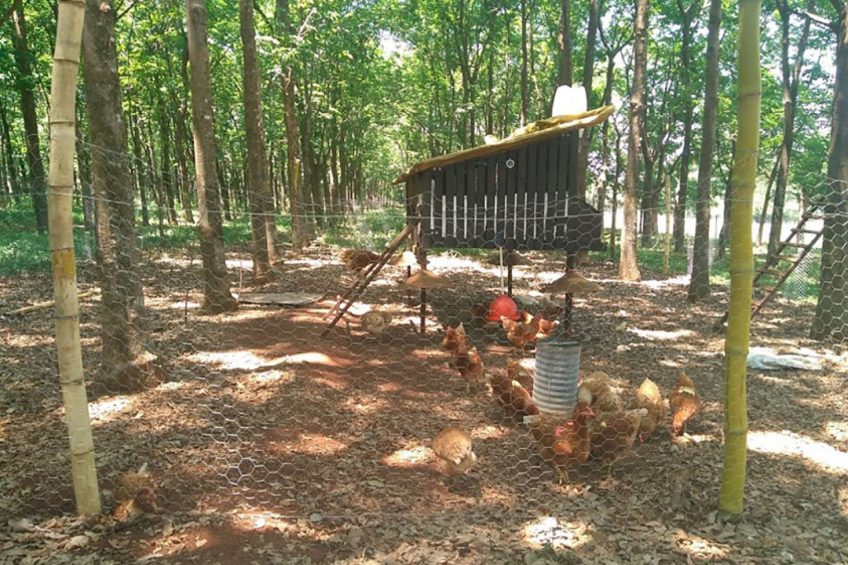Research looks at ‘forest chicken’ for animal welfare

The University of São Paulo (USP) has done research into the viability of a so called agroforestry system. The goal is to produce chickens inside a “forest” in order to increase the welfare level and to reintroduce the bird to its ‘natural environment’.
“Conventional poultry production is often met with criticism regarding the lack of animal welfare,” says Nina Publio Camarero, agronomist and researcher from Esalq (Agronomy School Luis de Queiroz). In order to develop a new free-range system which could meet societal demands, she combined chicken production with existing agricultural practices.
As Brazilian farms are required to have 20% of their land planted with trees, keeping birds in this area could generate jobs and improve the quality of products and life for the animals. “Consumers are asking for products that value animal welfare all around the world. Large companies and retailers already announced that products will be certified for animal welfare,” the researcher highlights.
As the animals were closer to their natural environment, hierarchy relationships and dominance behaviour have been strengthened in the group.”
Positives results from birds in agroforestry system
Birds in the agroforestry system (SAF) show an increasing level of eating, scratching and relaxing behaviour. Furthermore, aggressive pecking seen less often. “As the animals were closer to their natural environment, hierarchy relationships and dominance behaviour have been strengthened in the group,” Nina comments.
Agroforestry systems are very promising because it brings both animal production and environment closer to their natural state.”
Egg production within agroforestry system vs conventional production
With regards to egg production, the agroforestry system had better results because, according to Nina, chickens started laying earlier and more uniformly. Despite that, there wasn’t a big difference between treatments. The proportions of shell, yolk and white were very similar between the 2 systems. The eggs in the conventional production had a slightly higher weight than the eggs of the SAF experiment. On other hand, the yolk colour did differ. The SAF´s eggs had a stronger yellow than the eggs for conventional production.
 Addressing sustainability challenges in Dutch egg sector
Addressing sustainability challenges in Dutch egg sector
Steps towards sustainable egg production require multi-stakeholder dialogue to find consensus in a world where global demand for eggs is increasing.
“Agroforestry systems are very promising because it brings both animal production and environment closer to their natural state. In addition, they can increase profitability for the whole farm,” concludes Nina.
 Australia’s chicken and egg industries aim for carbon neutral
Australia’s chicken and egg industries aim for carbon neutral
Australia’s chicken meat and egg industries are investigating ways to get to carbon neutral as consumers aim to reduce their dietary carbon footprint.












